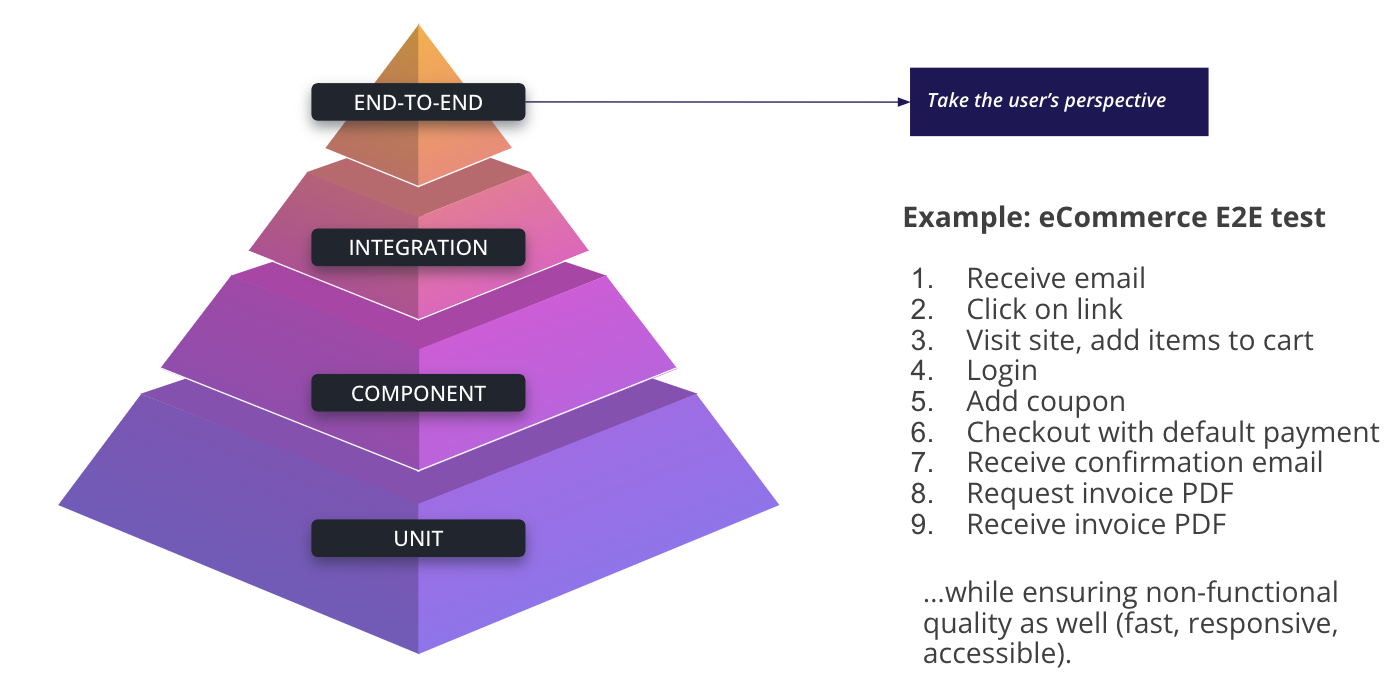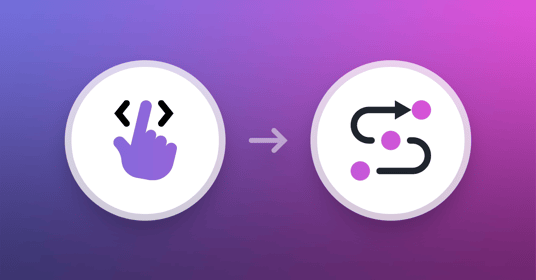Get a Free Trial
Creating, executing, and maintaining reliable tests has never been easier.
End-to-end testing is an essential part of any quality engineering practice. When planned and executed correctly, end-to-end testing creates a much-needed safety net that bridges the gap between deployment frequency and the change failure rate, both of which are key DORA metrics. In other words, end-to-end testing helps ensure that software organizations can innovate at the speed of DevOps without disrupting their users with buggy releases.
But building and scaling an effective end-to-end testing strategy is often time-consuming and challenging. Since E2E tests are designed to validate an entire user journey, they’re often complex and brittle. Manually executing tests to cover every possible customer experience is labor intensive, but automated E2E tests built on scripted testing frameworks can only be supported by SDETs or developers, creating bottlenecks as tests inevitably break. Once tests break, they require time-intensive maintenance that can only be done by SDETs or developers who could otherwise be focused on building and testing new features. These challenges are why more enterprises are turning to low-code test automation to support and scale their end-to-end testing strategies.
What is End-to-End Testing?
End-to-end testing ensures that each step in the customer journey works together as a cohesive experience. They’re essential for testing product quality as the customer sees it, and therefore an important part of building a quality engineering practice. Unlike unit or component testing, which focus on individual pieces of the application, E2E tests seek to understand product quality as an integrated journey across multiple functions, scenarios, and environments.

End-to-end testing, along with manual and exploratory testing, is at the top of the testing pyramid since organizations typically run fewer of them compared to unit or integration tests. In the example above, an end-to-end test for an eCommerce application is likely to cover the entire process needed to successfully open an email, make a purchase with a coupon, and checkout.
Why End-to-End Testing Matters
End-to-end testing is one of the most effective ways software teams can understand the customer experience. As organizations adopt quality engineering, which integrates testing into the development cycle with the express purpose of improving the user experience, end-to-end testing forms the fundamental connection between code and customer.
The more quality teams can connect software testing strategies to the customer experience, the better they’re able to elevate testing and grow their impact on the entire organization. Almost 80% of CIOs plan to increase investment in the customer experience in 2023, despite unpredictable economic conditions. That interest stems from growing competition for online consumers, who have more choice and ability to switch between brands in a digital-first world. 54% of consumers say that most brands need to improve their customer experience, and 73% say that the customer experience is a factor in their purchasing decisions. In a post-2020 world, that demand for better user journeys encompasses digital-first experiences: 82% of the top-performing companies pay attention to the digital customer experience.
The Power of Intelligent Low-Code End-to-End Testing
Reconciling the importance of end-to-end testing and the challenges of end-to-end testing is an ongoing effort for most quality teams. Manually testing all possible customer journeys is virtually impossible, especially when factoring in non-functional requirements like accessibility and performance. But scripted, high-code test automation frameworks also have diminishing returns for automated end-to-end testing as tests break and need maintenance.
Low-code test automation removes the challenges of scaling and maintenance by enabling everyone to contribute to end-to-end testing. The test creation process follows the same flow as an actual user journey, making it easy to ensure that E2E tests are providing an accurate view into the application as customers see it. When test creation is easier, more people from across the organization can amplify their expertise through reusable flows that help QA teams and developers extract more value from their end-to-end testing strategy.
Low-code end-to-end testing also makes it easy to expand and refine tests to better reflect customer needs and developer best practices. For example, low-code API test steps can be integrated into existing end-to-end tests for faster test execution and easier investigations. This makes end-to-end tests more valuable and allows QA organizations to see a faster time-to-value for API testing, even if they haven’t done API testing before. Organizations also have the option to incorporate automated accessibility tests as part of their end-to-end testing strategy to ensure that all users have a delightful experience on their application.
Even as QA teams extract more value from end-to-end testing with API and accessibility test steps, they don’t need to worry about maintaining these more complex test cases. Autohealing, a machine learning-powered capability, ensures that tests can evolve with the application. Using over 35 unique identifiers, intelligent test automation updates tests as corresponding UI elements change with new releases. QA teams can review and edit these changes as needed, saving them valuable time and effort in managing their end-to-end tests.
Elevate Software Testing with High-Impact End-to-End Tests
End-to-end testing is an essential part of a quality engineering strategy that accelerates deployment frequency and improves the customer experience. But not all end-to-end tests are created equal: to help their organizations make the most of this customer-focused testing tactic, software teams need test automation platforms that make it easy to build, scale, and manage end-to-end testing. With low-code, quality professionals have the power to quickly create tests without worrying about maintenance eventually causing a bottleneck. They can also maximize the value of end-to-end testing by integrating API tests and automated accessibility checks for faster, more performant tests that truly reflect the user experience.
Get started with low-code end-to-end testing by registering for a free 14-day mabl trial.






